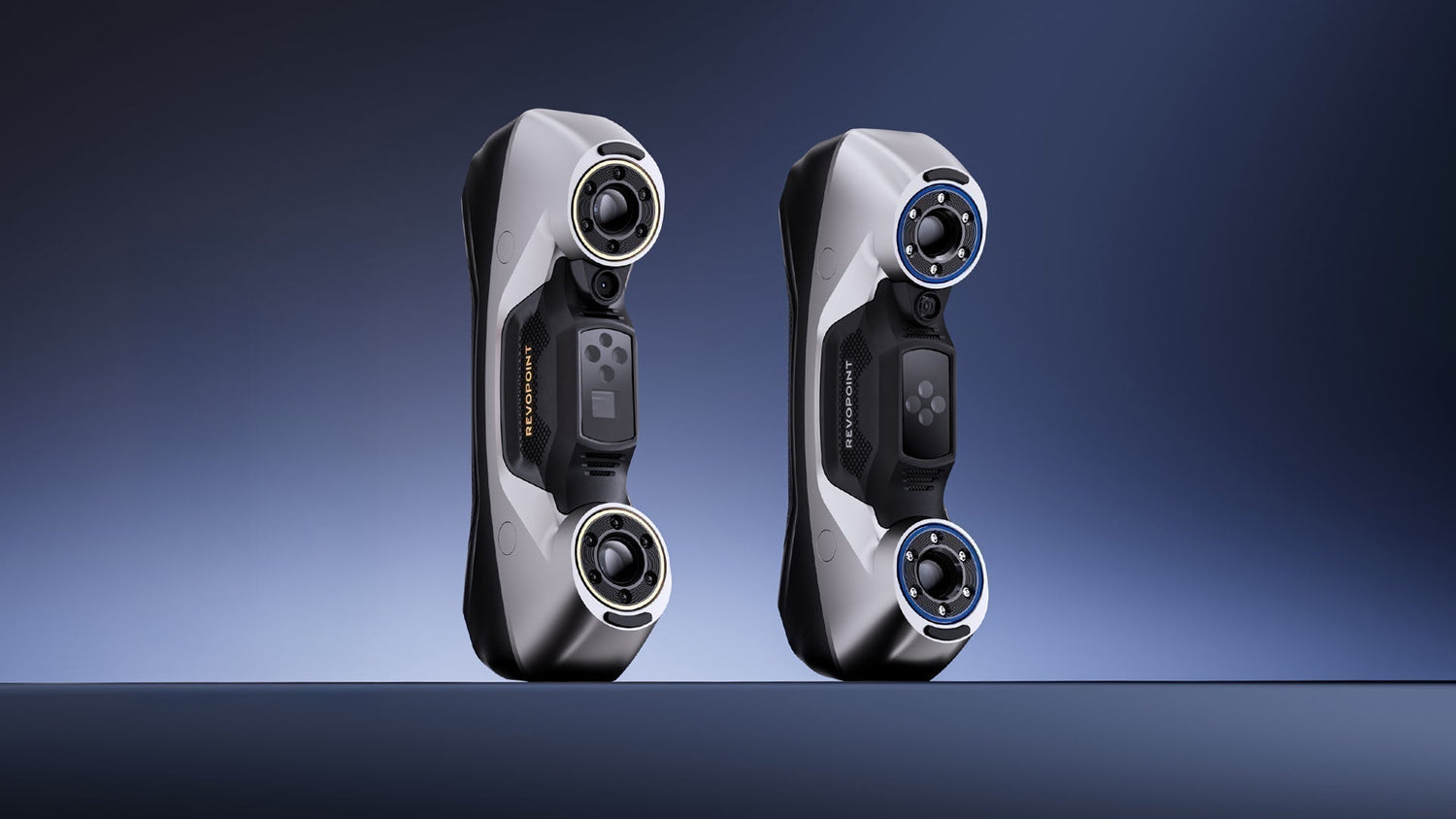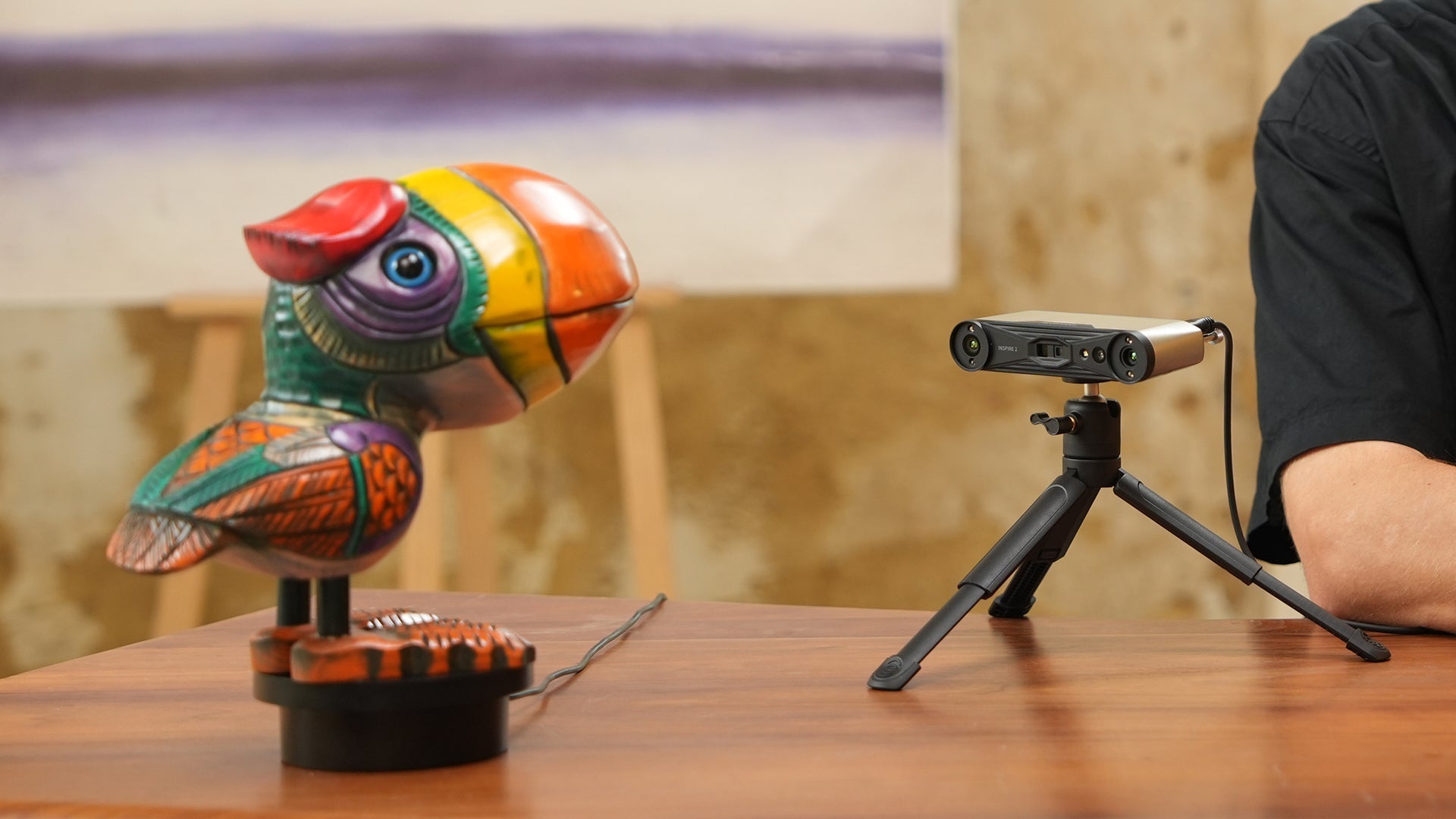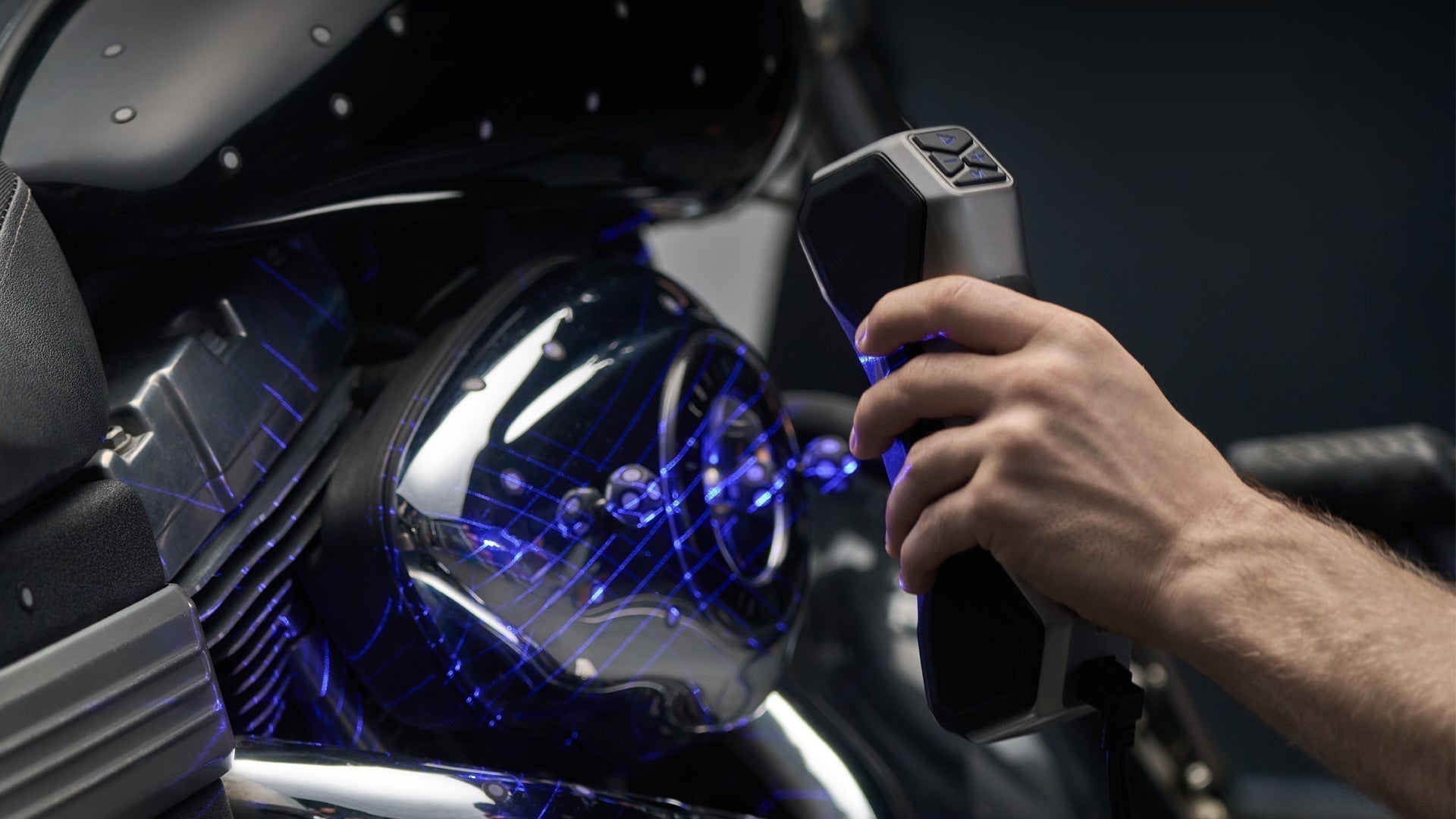Selecting the right 3D scanner is often the defining factor in achieving consistent, high-quality results in engineering, product design, digital archiving, and educational applications. As the expectations for precision, flexibility, and ease of use continue to rise, the MetroY 3D Scanner and MetroY Pro 3D Scanner stand out in the blue laser and structured light 3D scanner segment. This article provides an in-depth comparison from both a technical and user-centric perspective, helping professionals evaluate which device best aligns with their needs.
Technical Specifications at a Glance
|
Specification |
MetroY 3D Scanner |
MetroY Pro 3D Scanner |
|
Scanning Type |
Handheld |
Handheld & Desktop |
|
Technology |
Multi-line Blue Laser |
Multi-line Blue Laser + Full-field Structured Light |
|
Scanning Modes |
3 (Cross-line, Parallel, Single-line) |
5 (adds Structured Light & Auto Turntable) |
|
Precision (Single Frame) |
Up to 0.01 mm |
Up to 0.01 mm |
|
Accuracy (Single Frame) |
Up to 0.02 mm |
Up to 0.02 mm |
|
Volumetric Accuracy |
0.02 mm + 0.04 mm × L (m) |
0.02 mm + 0.04 mm × L (m) |
|
Max Scanning Speed |
Multi-line Laser Scan: |
Multi-line Laser Scan: 1,700,000 Points/s |
|
Tracking |
Marker, Global Marker |
Marker, Global Marker, Feature |
|
Wireless |
Wi-Fi 6 |
Wi-Fi 6 |
|
Weight |
447 g |
450 g |
|
Dual-Axis Turntable |
Optional |
Included |
|
Recommended Use Cases |
Small to medium workpieces |
Small to medium, advanced workflows |
User Experience: Portability, Setup, and Workflow
Out-of-the-Box Usability
For many users, the initial impression is shaped by setup time and portability. Both MetroY and MetroY Pro are compact and lightweight, easily fitting into a standard carrying case. The MetroY focuses on handheld scanning, making it convenient for on-site work, field inspections, and educational settings. The MetroY Pro, while only slightly heavier, includes a dual-axis turntable and tripod, expanding its use to automated desktop scanning—ideal for repetitive tasks or when capturing objects from every angle is essential.

Wireless Freedom and Real-Time Feedback
Both devices support Wi-Fi 6, enabling wireless connectivity and real-time scan visualization on a connected PC or device. This wireless workflow is especially beneficial in environments where cables can restrict movement or introduce clutter. Users consistently note the advantage of untethered scanning when dealing with large workpieces, moving around complex objects, or working in locations where space is limited.
Scanning Modes: Practical Differences
From a user’s perspective, the three scanning modes on the MetroY (cross-line, parallel-line, single-line) provide a versatile toolkit for most industrial and creative applications. The cross-line mode offers rapid capture, particularly useful for flat or shiny surfaces, while the parallel-line mode enhances detail around edges and the single-line mode is tailored for deep holes or recessed features.

MetroY Pro, however, adds two key scanning modes powered by structured light: full-field scanning and auto turntable. These enable ultra-fast, marker-free scanning, particularly useful for multi-textured, fragile, or irregularly shaped objects. The auto turntable feature is a game-changer for users who regularly need to scan multiple sides of objects with minimal manual intervention, such as in quality control or digital archiving.
Data Quality and Accuracy in Practice
Both scanners deliver up to 0.01 mm precision and 0.02 mm accuracy—figures that translate into extremely faithful digital reproductions for most applications. Users in manufacturing and research highlight the reliability of volumetric accuracy, especially when scanning parts for measurement or CAD integration. The integrated temperature compensation system ensures that results remain stable even in environments with fluctuating conditions.
Software Ecosystem and Post-Processing
Both devices are supported by the Revo Metro software suite for scanning, editing, and exporting. The interface is designed for both beginners and advanced users, offering real-time feedback, mesh editing, noise reduction, and compatibility with standard formats (PLY, OBJ, STL, ASC, 3MF, GLTF, FBX). For users who require advanced mesh editing or scan-to-CAD workflows, Revo Design and Revo Measure expand the ecosystem, supporting everything from parametric modeling to dimensional analysis.
Learning Curve and Support
User feedback indicates that the learning curve is gentle, thanks to intuitive controls and the availability of comprehensive online resources. For more complex workflows—such as merging multiple scans or aligning high-precision models with CAD drawings—Revopoint’s support channels and community resources are frequently utilized by both new and experienced users.
MetroY or MetroY Pro: Which Fits Your Workflow?
● MetroY 3D Scanner is favored by users who prioritize mobile, handheld scanning and require a robust, accurate tool for general engineering, product development, or education. The ability to quickly scan a variety of materials and geometries without extra accessories appeals to users who need flexibility and speed.
● MetroY Pro 3D Scanner is chosen by professionals who need additional automation, such as batch scanning with the turntable, or those working with complex, multi-surface objects where markerless, structured light scanning is advantageous. This model is also preferred in environments where multi-angle capture are essential, such as in cultural preservation, healthcare modeling, and advanced manufacturing.
Real-World Application Insights
● Reverse Engineering: Both scanners excel, but MetroY Pro offers streamlined workflows for objects requiring detailed, multi-angle data.
● Quality Inspection: MetroY Pro’s automation and structured light speed up inspection cycles, while MetroY remains strong for in-situ quick checks.
● Digital Archiving and Creative Arts: MetroY Pro’s accuracy and markerless scanning are valued for preserving artifacts and artwork.
● Education and Research: MetroY’s portability and straightforward operation make it a practical choice for classroom and fieldwork.

In-Depth Look: Blue Laser and Structured Light Technology
Blue laser technology is renowned for its shorter wavelength, which results in greater precision and the ability to scan challenging materials such as shiny or dark surfaces. The multi-line blue laser system used in both MetroY and MetroY Pro projects multiple finely calibrated laser lines, enabling high-density data capture in a single pass. This reduces noise, improves the accuracy of edge detection, and minimizes the need for surface preparation compared to traditional white light scanners.
Structured light, featured in MetroY Pro, projects a patterned grid onto the object, enabling the capture of millions of points per second without requiring markers. This is especially advantageous when digitizing complex or delicate objects, as it reduces setup time and the risk of data loss due to marker misplacement. Structured light is also less susceptible to environmental lighting changes, providing consistent results in varied conditions.
Advanced Features: Automated Turntable and Temperature Compensation
The dual-axis turntable included with MetroY Pro automates the process of capturing objects from every angle, ensuring uniform coverage and significantly reducing manual intervention. This automation is particularly valuable in quality inspection, where repeatability and speed are essential, or in digital archiving, where delicate objects benefit from non-contact, hands-free scanning.
Both scanners include real-time temperature compensation, using high-sensitivity sensors to monitor environmental changes. This feature is crucial for maintaining consistent measurement accuracy during extended scanning sessions or in settings where temperature fluctuations are common, such as factory floors or field sites.
Robust Software Integration: Revo Metro, Revo Design, and Revo Measure
Revopoint’s software suite is developed to streamline the entire workflow—from scan acquisition to post-processing and final output. Revo Metro allows users to monitor scans in real time, adjust parameters on the fly, and process point clouds with one-click tools for fusion, meshing, and clean-up. The software’s compatibility with major CAD and 3D modeling platforms ensures seamless transfer to downstream applications.
For users requiring advanced design or inspection capabilities, Revo Design offers comprehensive mesh editing and scan-to-CAD tools, while Revo Measure supports dimensional analysis, quality inspection, and reporting—making these scanners a complete solution for digital manufacturing, research, and preservation.
Sustainability and Long-Term Reliability
Both MetroY and MetroY Pro are engineered for durability and adaptability. The ability to recalibrate the scanner ensures long-term measurement integrity, while modular accessories—such as the mobile kit and marker block kit—extend device lifespan and adapt to evolving project requirements. Revopoint’s commitment to continuous software updates and active user support further enhances the value proposition for organizations investing in digital transformation.
Conclusion: User-Centric Innovation in 3D Scanning
MetroY and MetroY Pro represent two paths to high-precision 3D scanning, shaped by the needs of real-world users. The MetroY’s balance of portability, accuracy, and ease of use makes it a versatile companion for most scanning tasks. The MetroY Pro, with its enhanced automation, structured light capabilities, and expanded accessory suite, appeals to advanced users seeking to streamline complex workflows or push the boundaries of digital capture.
Both devices are underpinned by Revopoint’s commitment to user experience, robust support, and continuous software development—ensuring you can focus less on troubleshooting and more on achieving consistently excellent results in your 3D digitization projects.



Leave a comment
This site is protected by hCaptcha and the hCaptcha Privacy Policy and Terms of Service apply.